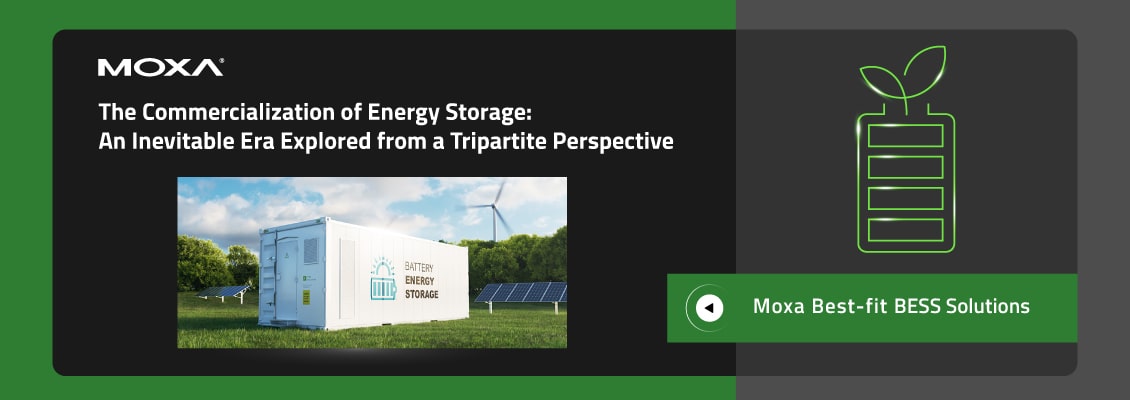
What is BESS?
BESS helps the grid stay stable by storing energy in batteries and distributing it when needed. It harnesses the advanced technologies of lithium-ion batteries, integrating them with renewable energy sources. The key elements of BESS are:
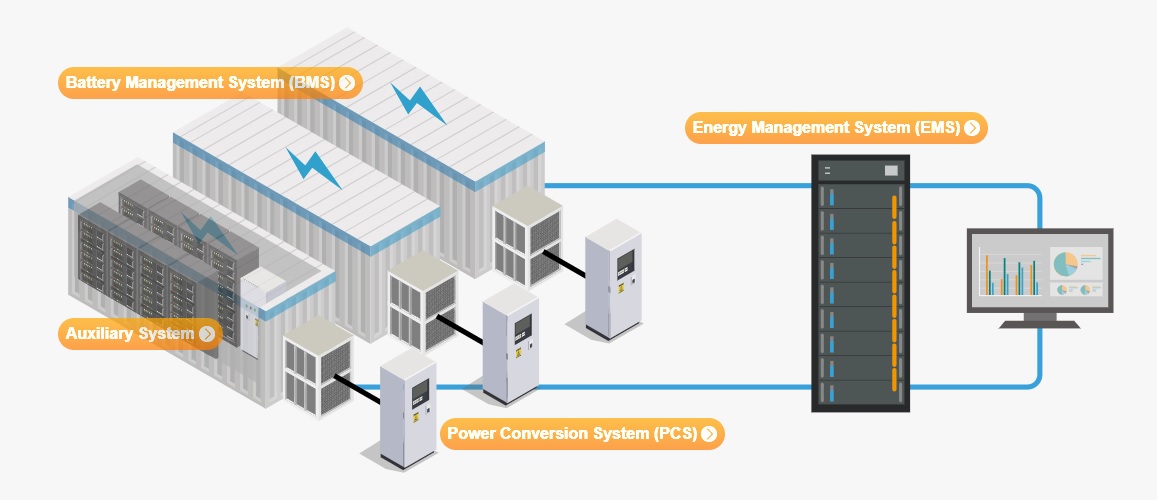
Battery Management System (BMS)
- Battery monitoring and control
- Raises alert when battery status is abnormal
Energy Management System (EMS)
- Controls power flow and monitors state of charge (SoC)
- Remote monitoring and KPI management
- Local and cloud-based data logging and management
Auxiliary System
Raises alert when anomalies are detected
- Environmental conditions
- Unauthorized access
- Uninterruptible power supply (UPS)
- HVAC
Power Conversion System (PCS)
- Managing battery charging and discharging through EMS commands
- AC/DC conversion
Essential Criteria for BESS Industrial Cycles
In the ever-evolving landscape of the BESS industry, navigating the complexities of its life cycle is no small feat. Addressing talent shortages, time-to-market deadlines, and future-proof planning is crucial for industry leaders. These challenges necessitate a proactive approach to overcome the unpredictability of renewable energy resources and simplify energy management.
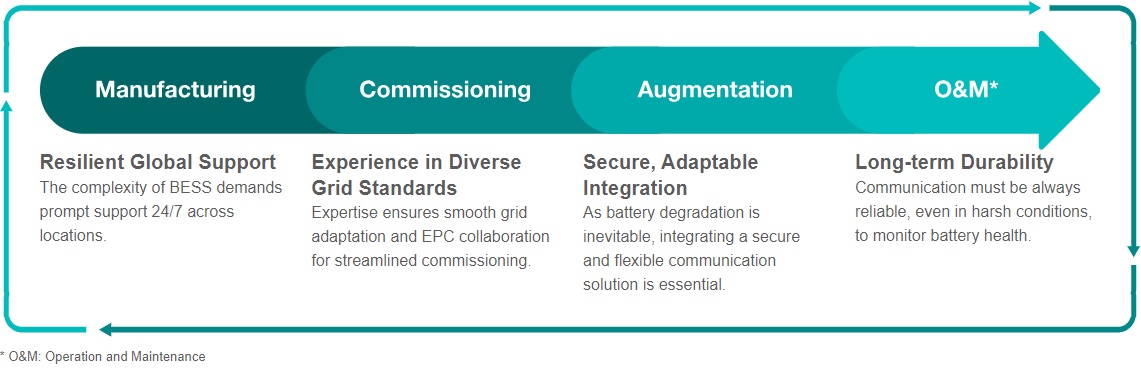
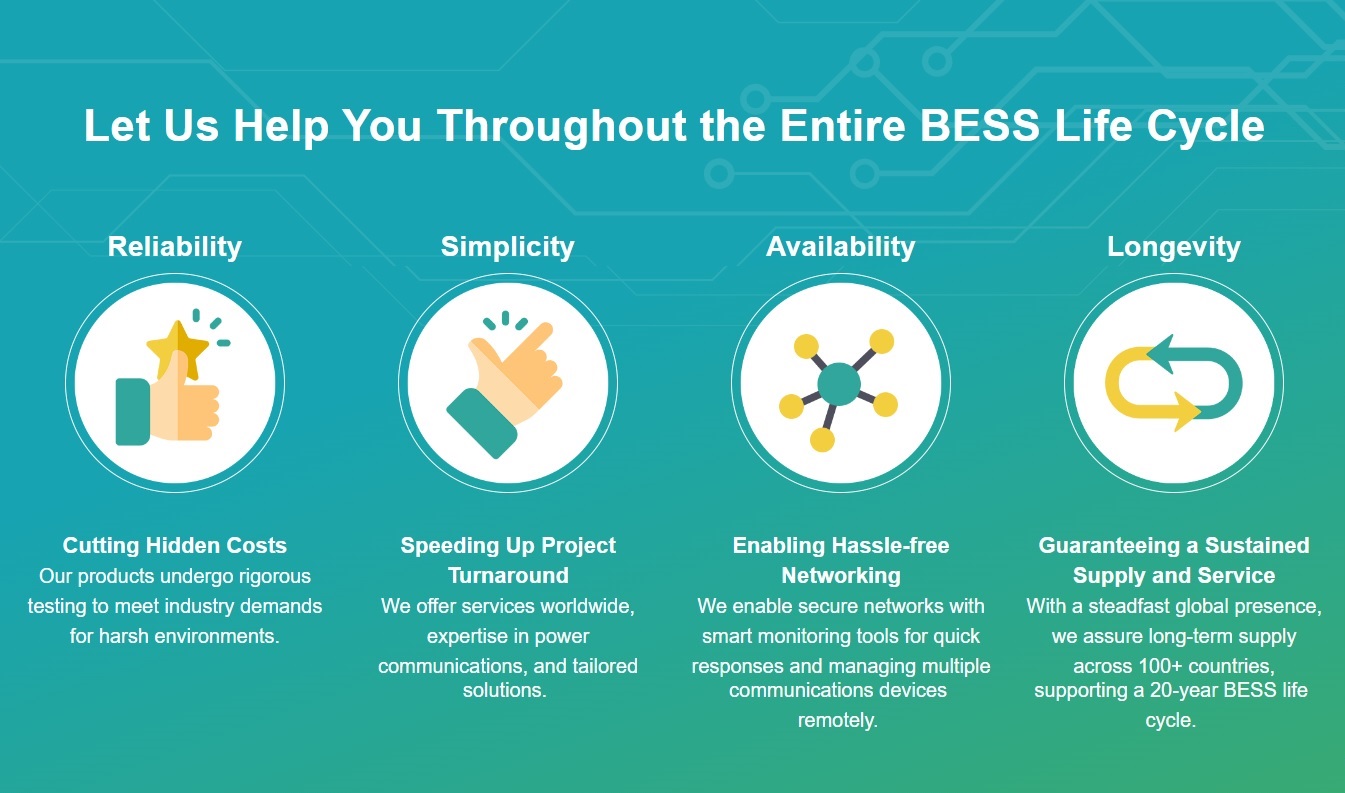
Find Your Best-fit BESS Solutions
BESS Supplier
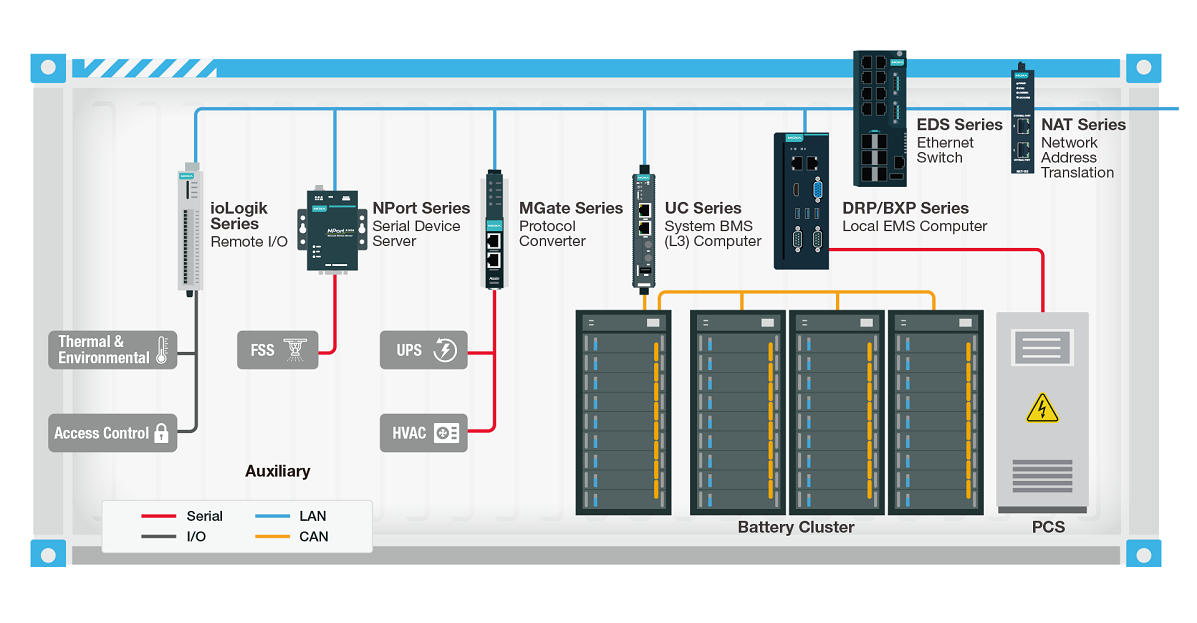
BESS Deployments
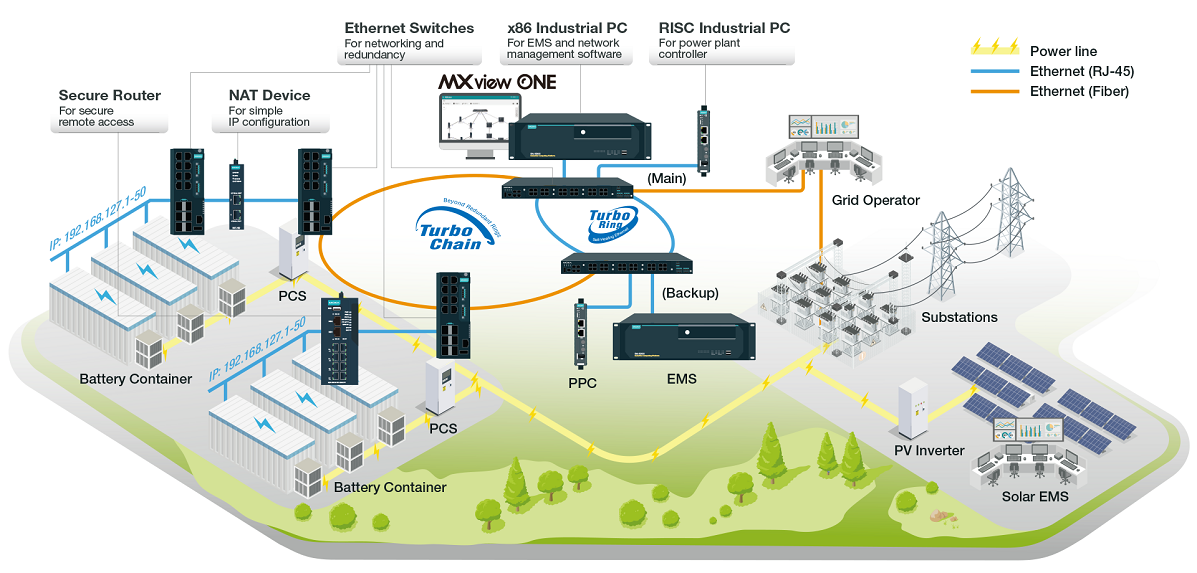
Highlight Products
Arm-based Computers
UC family for power plant controller
x86 Computers
DA series IEC-61850 rackmount computers for EMS server
Automatic Backup and Configurations
The ABC series for device configurations and maintenance
Ethernet Switches
EDS and RKS family for Ethernet connections and redundancy
Industrial NAT
NAT series for simple IP address configuration
Network Management Software
Industrial network management software for converged automation networks
Secure Routers
EDR family for cybersecurity requirements
Embracing the Dawn of Energy Storage Commercialization: A Comprehensive Tripartite Exploration
A transformative era looms as renewable energy dominance surges. According to the "Electricity Market Report 2023" by the International Energy Agency (IEA) [1], a staggering 98% of new power generation will stem from renewable sources within the next three years. While wind and solar energy have thrived, their unpredictability underscores the need for robust solutions. Enter the megawatt-level Battery Energy Storage System (BESS), a rapid-response savior. This discourse delves into the BESS domain's readiness to cater to escalating demands, encompassing battery costs, policy incentives, and the evolving market landscape.
- Illuminating BESS's Path: The Role of Lower Lithium Battery Costs
The thriving energy storage market owes its momentum to the plummeting costs of lithium-ion batteries. A resounding 90% cost reduction from 2010 to 2020 has ushered in a new era for BESS, fortifying market entry and expansion.
- Empowering BESS via Legislative Measures: A Global Synergy
Leading power nations like the U.S., UK, EU, Japan, and China have orchestrated legislative symphonies to propel energy storage systems forward. Incentives and tax benefits form the backbone of this global endeavor, aiming to galvanize domestic energy transformation. A prime example is the U.S. Inflation Reduction Act (IRA) of 2022, injecting a staggering USD 370 billion into renewable energy and climate change initiatives. This catalyst extends a generous investment offset of over 30% for energy storage equipment. Similarly, China's ambitious target of achieving a 30 GW storage scale by 2025 underscores its drive to amplify the energy storage realm.
- Unveiling the BESS Market Dynamics: A Kaleidoscope of Market Players Empowering
While no single BESS titan reigns supreme, a cluster of early adopters has etched their imprint. Simultaneously, fresh contenders continue to flock. An intriguing narrative emerges from the market, with the top seven battery storage providers relinquishing their grip, plummeting from 61% to 33%, as elucidated in the 2022 report, "Battery Energy Storage—Value Chain Integration is Key" [2]. This intriguing shift paints the BESS journey towards commercialization with a richer palette of market participants.
- From Trailblazers to Vanguard: Navigating BESS's IT/OT Integration Frontier
The irreversible shift towards cleaner energy sources kindles a rapid BESS ascendancy. The landscape bears witness to pioneers in battery cabinet manufacturing and enterprising start-ups transcending the rudimentary. Their focus has shifted to expeditious deployment, enduring operational longevity, and fortified network designs. Consequently, the fusion of AI, big data, and network security becomes pivotal. Triumphing in the BESS domain hinges upon fortified IT and OT integration prowess, crafting superior energy storage solutions that power a sustainable future.
*For any further information please contact us via info@rockford-qatar.com.





-150x150.png)


